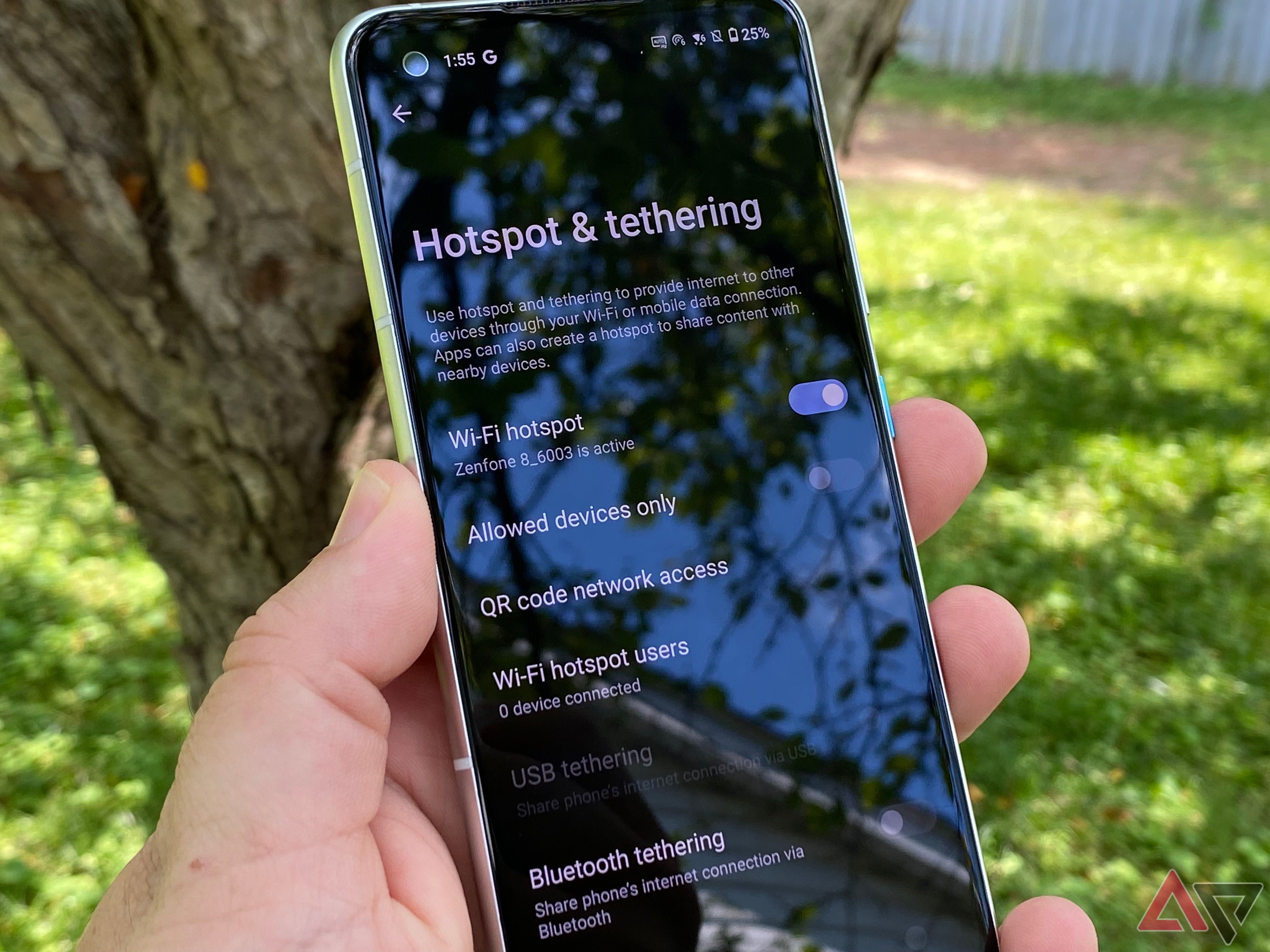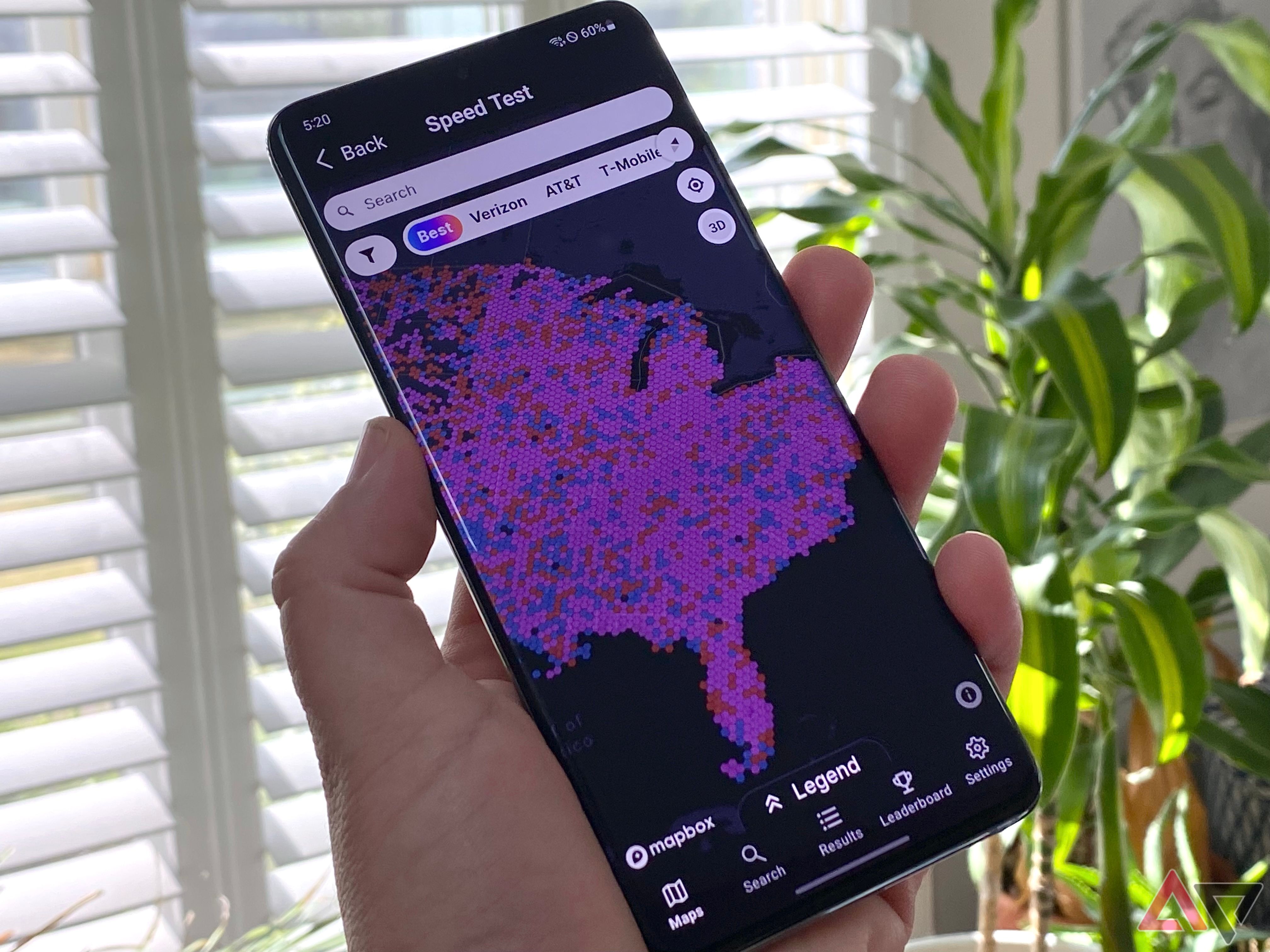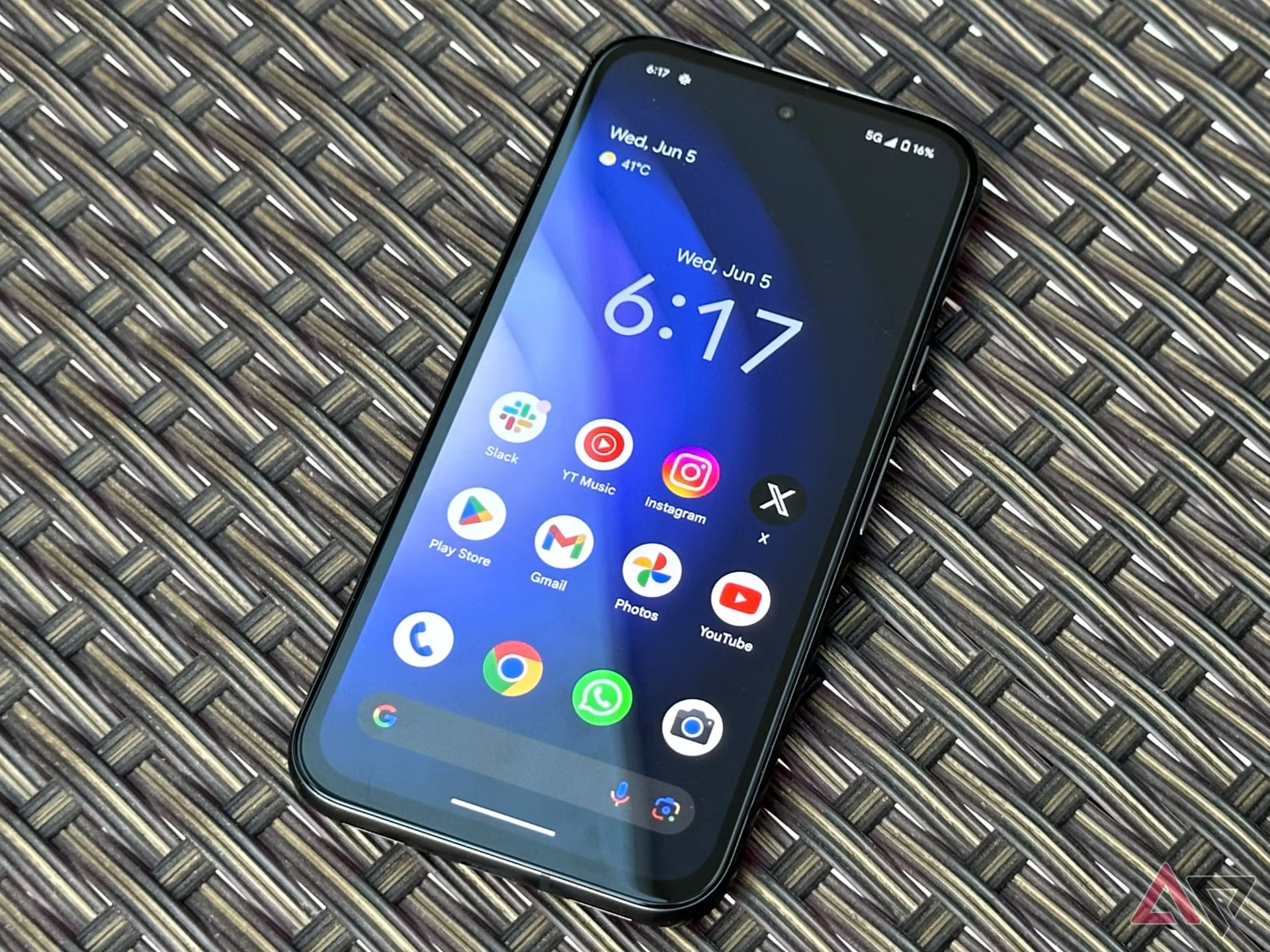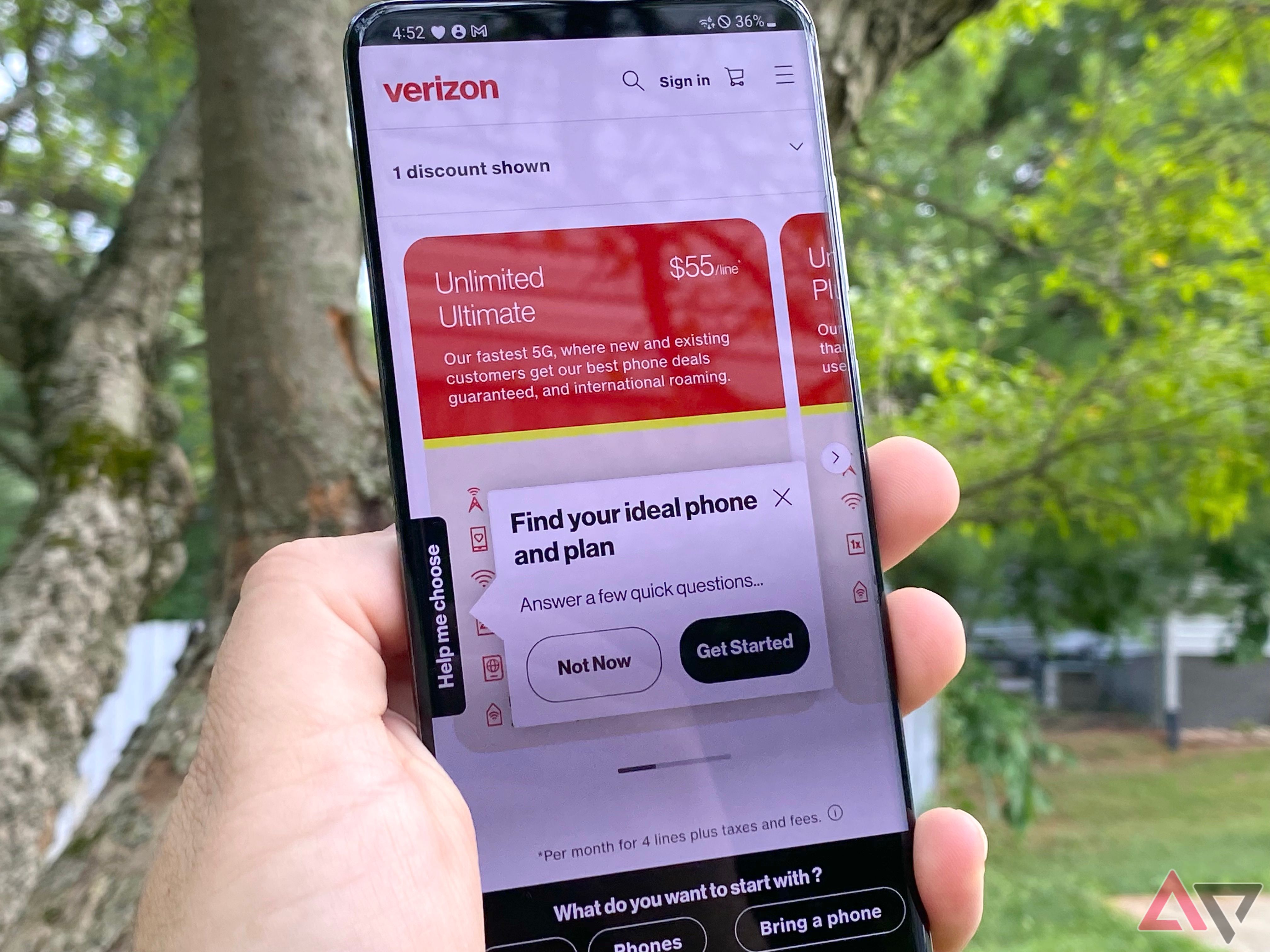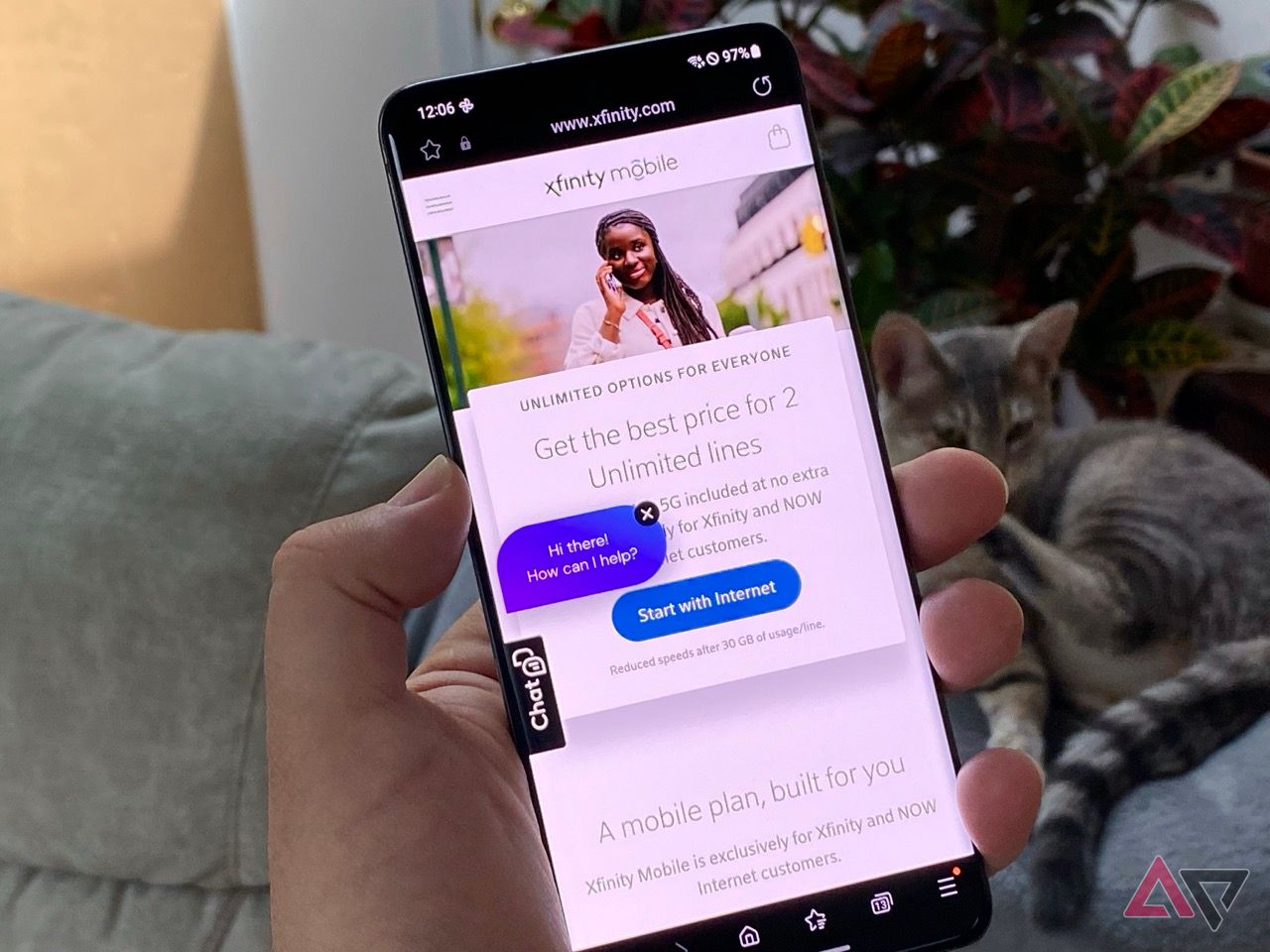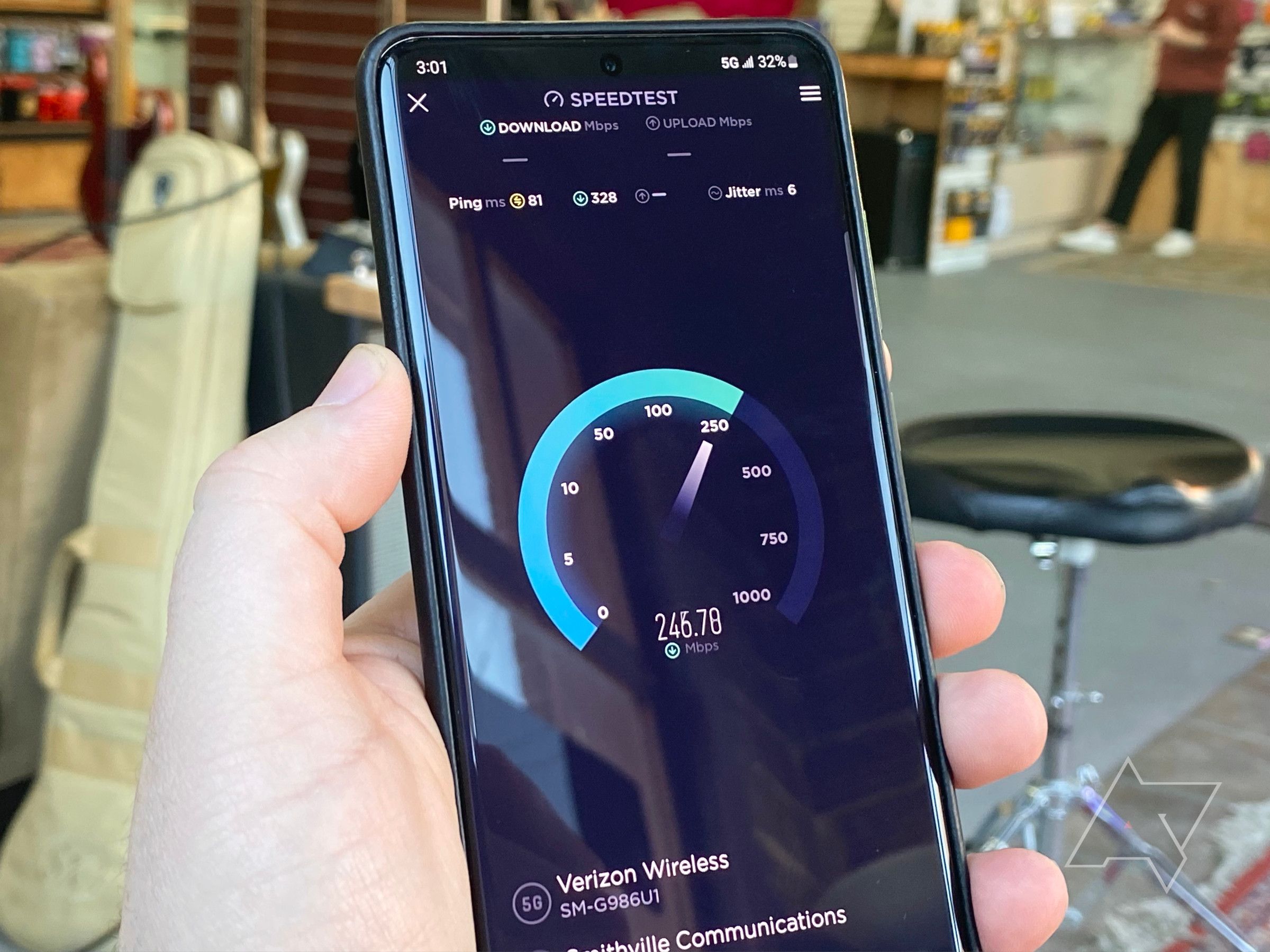-
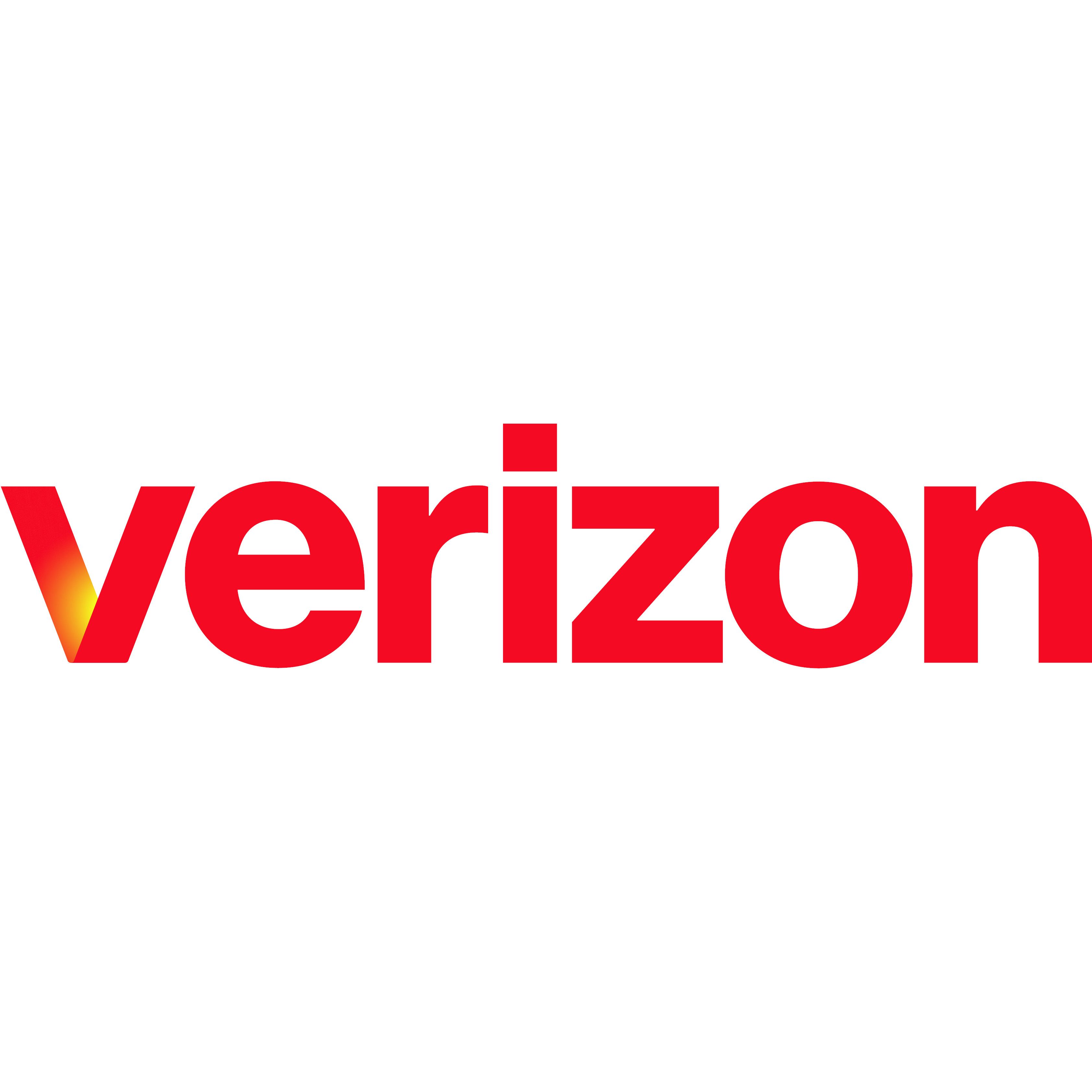
Premium unlimited data
Verizon
Verizon is one of the Big Three carriers and is known for its strong LTE coverage, but with other carriers closing the coverage gap, and a slow start to mid-band 5G, Verizon isn’t the obvious choice it once was.
Pros- Still some of the best rural coverage
- Simple plan structure
- Solid savings with plan add-ons
- Home internet savings available
Cons- Taxes and fees are extra
- The best phone savings require the most expensive plan
-
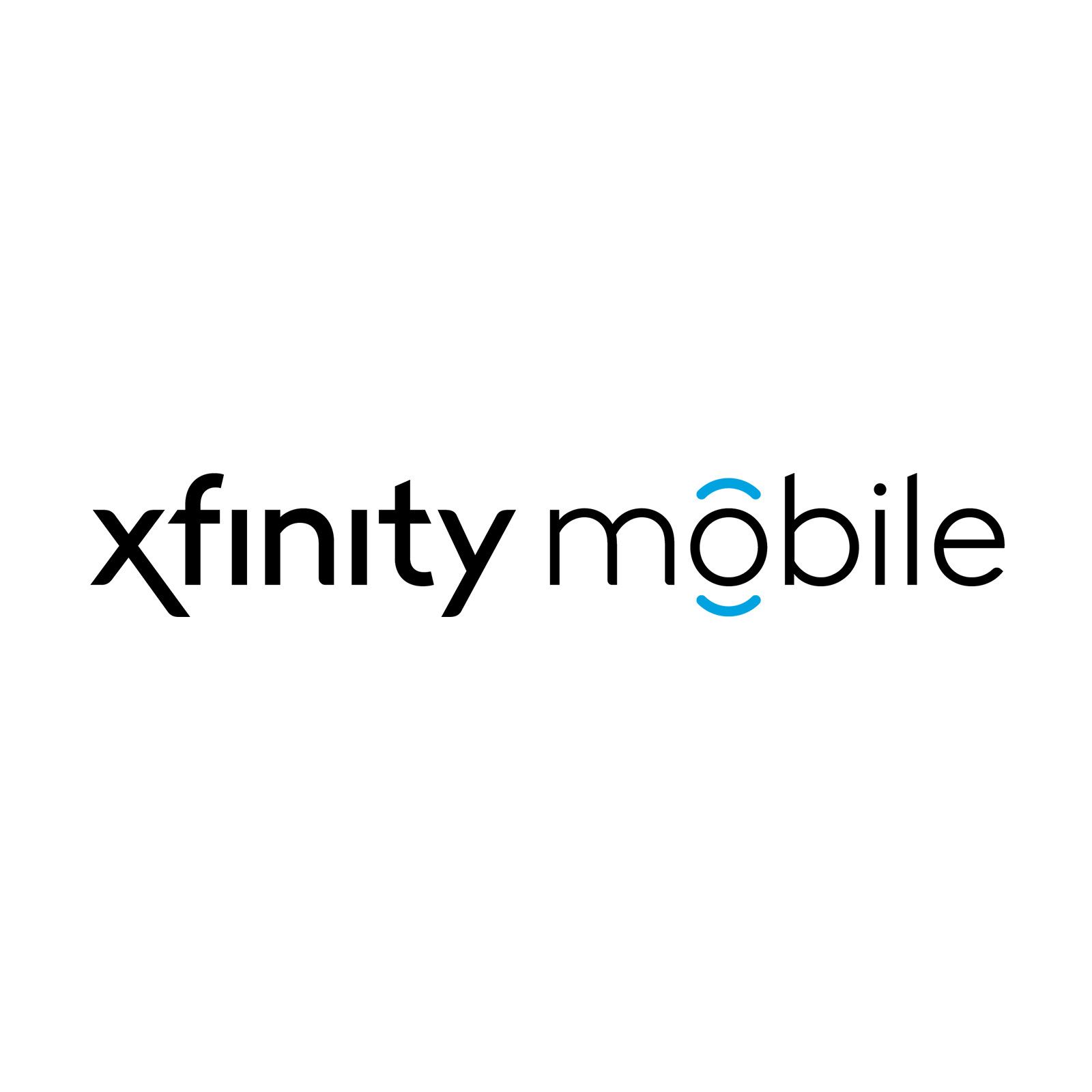
Bundle your home and mobile internet
Xfinity Mobile
Xfinity is one of the biggest cable companies in the country, so it makes sense it would want to bundle services under its brand. Xfinity Mobile uses Verizon coverage with access to Xfinity hotspots as well.
Pros- Strong Verizon and hotspot coverage
- Cheap to add lines
- Home internet bundles available
Cons- Taxes and fees are extra
- No true unlimited option
Verizon and Comcast are two of the biggest communications companies in the country, but their approaches to mobile with Verizon Wireless and Xfinity Mobile are quite different. Verizon builds and maintains its own wireless network with vast nationwide LTE coverage and a 5G network that’s struggling to keep up with the likes of T-Mobile, but still making solid progress.
Xfinity Mobile, on the other hand, uses the Verizon network for the majority of its coverage, with some extra coverage provided by businesses and residences with Xfinity Internet service thanks to Xfinity WiFi connections.
Mobile carrier features
Verizon is a fairly typical carrier with three main unlimited postpaid options and four prepaid options to choose from. Verizon’s postpaid plans each come with unlimited 5G data, though only the top two get the full network speed of Verizon’s mid-band and mmWave 5G. Still, with multi-line discounts and a surprisingly restrained set of service plans as a starting point, Verizon could be a solid deal.
The thing that makes Verizon stand out the most in a sea of wireless carriers is its add-ons. These add-ons are more than hotspot data and international passes, though you can get those too, with many people opting for subscriptions like Apple One, Netflix, MAX, and Disney+ bundles. The best part is these add-ons only cost $10 each at a time when subscription services seem to regularly increase their prices.
When it comes to international features, Verizon isn’t the best, though you still get usage in Mexico and Canada with all postpaid plans, plus 210+ destinations with the top Unlimited Ultimate plan. Further separating these plans are the amount of hotspot data, streaming video quality, and device savings.
Xfinity Mobile keeps its plans fairly simple with two unlimited options and one by-the-gig plan. The unlimited plans come with a set amount of high-speed data that is then slowed down, like a lot of other prepaid carriers. Unlike a lot of other carriers, however, the connection is only slowed down to 1.5Mbps on the cheaper plan and 5Mbps down on the premium plan, so you can actually keep using your phone.
While Xfinity Mobile uses Verizon for most of its coverage area, a lot of data customers use will be on Xfinity’s own hotspots called Xfinity WiFi. Utilizing dual-band Wi-Fi gateways, Xfinity can offer Wi-Fi coverage in places that use Xfinity service, such as businesses or residences. Of course, since you’re bundling Xfinity Internet service with Mobile, you won’t really use much data at home either.
Signal and reception
Verizon has blanketed much of the country with its efficient LTE coverage, with many rural areas accounted for, but 5G has been slower to get going. While Verizon has some low-band spectrum it can use for 5G, the real story comes with C-band, which is around 3.7GHz.
This spectrum simply doesn’t reach as far as Verizon’s LTE, so even with upgraded towers, there are still quite a few places where customers will still use LTE. That said, LTE is plenty fast. Just keep in mind that, no matter what the commercials say, 5G still has a long way to go, especially at Verizon.
Check Verizon’s coverage map to get an idea of what kind of coverage you can expect where you live and work. If you have an eSIM-compatible phone, you can even try out the network’s data for 30 days to be sure you’re covered.
Xfinity Mobile uses the Verizon network, so when you’re away from home or Wi-Fi, you’ll see nearly identical coverage to Verizon. With Xfinity WiFi hotspots dotted around the country, however, you may see your phone connecting to Wi-Fi when you’re in a business, like shopping at a store or waiting for an oil change.
Phone compatibility
Phone compatibility for Verizon is strong overall, with many models supporting the carrier’s bands. On 5G, your Verizon phone should support bands n2, n5, and n66 for low-band 5G, and band n77 for mid-band coverage. Luckily, this leaves you with quite a few phone options, like the Google Pixel 8, Galaxy S24, and modern iPhones. If your phone doesn’t support all of Verizon’s bands, your coverage could struggle in some areas.
Ready for a new phone? Verizon sells a variety of new devices, from high-end models to cheaper phones like the Google Pixel 8a. Savings depend on your plan, with the top savings reserved for Verizon’s most expensive plan; with three-year payment plans, you could get stuck paying off a phone for a while, so be careful. There are also savings for bringing your own device, so if you’re willing to buy a phone unlocked, you can still save with Verizon.
Xfinity Mobile also sells a solid range of phones with high-end options, like the latest Galaxy flagships and Pixel phones. You can sign up for a 24-month payment plan as well, with trade-in discounts on top of the standard savings. Naturally, you can also bring the phone you own to Xfinity Mobile, but make sure to check your IMEI first.
Plans
A carrier is nothing without good plans, and Verizon and Xfinity Mobile have some solid options for a lot of people. While they aren’t the best value data plans in every category, some options are still competitive for the right buyer. Verizon and Xfinity Mobile both rely on multi-line discounts to keep their prices low, so these plans are priced best when you’re bringing the family along.
Verizon’s plans
Starting with Verizon’s prepaid options, you can get talk and text for $30 per month. This plan is basic, but can be a solid pick for very light users, or a backup phone. After that, there’s a 15GB plan for $35 that includes shared hotspot data and usage in Mexico and Canada.
After that, a prepaid Unlimited plan starts at $50 per month with auto-pay enabled. In fact, all of Verizon’s plans require auto-pay for their best price, so if you don’t want to enable that, prepare to pay up to $10 more per line. If you stick with the carrier for nine months, however, you can reach the same price with loyalty discounts.
This plan also supports multi-line discounts, with each additional line coming in at $20. With 5GB of hotspot data and 5G speeds, this could be a solid plan for a heavier user on a budget.
At the top of the prepaid stack is Unlimited Plus for $60 per month with auto-pay. Once again, loyalty discounts are available and additional lines cost $20 each. This plan gets a few other upgrades, too, such as 25GB of high-speed hotspot data and 5G Ultra Wideband speeds. While Verizon Prepaid’s plans are fairly straightforward, unfortunately, the pricing is anything but.
Moving on to postpaid, Unlimited Welcome is Verizon’s cheapest postpaid option with unlimited data, but no access to Ultra Wideband speeds. For most folks, however, that’s still plenty fast for streaming and browsing. This plan gets no mobile hotspot data by default and also only supports 480p video streams. Fortunately, though, usage in Mexico and Canada is included.
This plan also gets the worst deals for new phones and the lowest discount for those bringing their own device. This plan starts at $65 per month for the first line, but comes down to $30 per line with four lines.
Unlimited Plus is next, with faster premium data, as well as full 5G access with Ultra Wideband. You get 30GB of hotspot data, as well as an upgrade to 720p streaming. Compared to Unlimited Welcome, you should also get better new device offers and a larger BYOD discount. This plan starts at $80 per month for the first line, but that comes down to $45 if you bring four lines.
Unlimited Ultimate is Verizon’s top plan and gets everything Unlimited Plus does, with more hotspot data at 60GB, full 1080p video streaming, and international talk, text, and data in 210+ destinations. This plan starts at $90 for the first line, but that drops to $55 per line for four lines. It also gets Verizon’s best new device savings as well as the biggest BYOD discount.
|
Unlimited Welcome |
Unlimited Plus |
Unlimited Ultimate |
|
|---|---|---|---|
|
Price (per month) |
1 line: $65 |
1 line: $80 |
1 line: $90 |
|
4 lines: $120 |
4 lines: $180 |
4 lines: $220 |
|
|
5G |
Nationwide 5G |
Ultra Wideband 5G |
Ultra Wideband 5G |
|
Talk and text |
Unlimited |
Unlimited |
Unlimited |
|
Data |
Unlimited |
Unlimited Premium |
Unlimited Premium |
|
Hotspot |
None |
30GB |
60GB |
|
Taxes and fees |
Extra |
Extra |
Extra |
Verizon’s plans are really a starting point with lots of add-ons available. You can choose from add-ons like the Disney Bundle with Dinsey+, Hulu, and ESPN+ for $10, Apple One for iPhone users, or even something like Walmart+. The best part is that these add-ons are $10 per month, which is nice when subscription services continue to raise their prices.
Don’t forget that with Verizon, you need to enable auto-pay to get the best prices available. Verizon also charges taxes and fees separately, so your final plan price may be a little higher than expected. The postpaid unlimited plans can also get a discount on Verizon Home Internet with either Fios or 5G Home service.
Xfinity’s plans
First thing first, all Xfinity Mobile plans are exclusive to Xfinity Internet customers.
Xfinity has a prepaid service it calls NOW, with one unlimited mobile plan available. This plan gets 20GB of high-speed data, unlimited talk, unlimited text, and not a whole lot more. Despite the underwhelming high-speed data cap, at just $25 with taxes and fees included, it’s still a solid deal for many.
The Xfinity Mobile By the Gig plan starts at $20 per month with 1GB of data. Additional data can be added at a rate of $20 per 1GB. While this is Xfinity Mobile’s cheapest plan, if you use more than 1GB of data, you’d be better off with the next plan.
Xfinity Mobile’s standard Unlimited plan is a well-constructed plan, with 30GB of high-speed data, 480p video streaming, and unlimited 3G-speed hotspot data. Once you use up your 30GB of data, you’re slowed to 1.5Mbps, which is faster than many other prepaid carriers. It starts at $40 per month, but each additional line is only $20, so you’d get a good deal by bringing the family along. Usage in Mexico and Canada is also included.
Unlimited Plus comes with 50GB of high-speed data that’s slowed to 5Mbps down and 2Mbps up if you use it all. That’s not fast, but still usable with most apps. Video streams are also bumped up to 720p quality and 15GB of high-speed hotspot data is included. At $50 for the first line and $30 for each additional line, this isn’t a cheap plan, but still a solid deal for a data-hungry customer.
|
By-the-Gig 1GB |
Unlimited |
Unlimited Plus |
|
|---|---|---|---|
|
Price per month (line 1) |
$20 |
$40 |
$50 |
|
Additional lines |
$20 |
$20 |
$30 |
|
High-speed data |
1GB |
30GB (1.5Mbps down after) |
50GB (5Mbps down after) |
|
Hotspot data |
Shared |
Unlimited 3G-speed |
15GB high speed |
|
Talk and text |
Unlimited |
Unlimited |
Unlimited |
|
Mexico and Canada |
Add-on available |
Included |
Included |
|
Taxes and fees |
Extra |
Extra |
Extra |
Keep in mind that Xfinity Mobile plans also have taxes and fees added later. For example, there are two fees charged by Comcast, not the government, called Universal Connectivity Fee and Regulatory Recovery Fee, which cost $3.99 and $1.56 per line.
Which should you buy?
Speed test on MobileX connected to Verizon UWB 5G
Verizon isn’t the cheapest carrier around, but a lot of folks aren’t looking for just the best prices, but also plenty of high-speed data so they don’t need to think about usage.
Verizon’s trio of unlimited postpaid plans is better for many people, since you don’t need to be an Xfinity customer to sign up. While there are a lot of folks on Xfinity, a lot of cheaper (and sometimes faster) internet options are becoming available, and tying yourself down with an Xfinity Mobile plan could cost you in the long run.
Verizon’s plans make the most sense with multiple lines as the price comes down with each line you add. Verizon’s add-ons are also an uncommon win in the carrier space, with not only the convenience of bundling, but some actual discounts as well.

Verizon
Verizon’s postpaid value depends on a few things, like your desire for add-ons, but for accounts with multiple lines, it’s a strong value.
If you’re an Xfinity Internet customer looking to simplify your billing, Xfinity Mobile’s prices are competitive, even if they’re not the best around. With 30GB of high-speed data on the cheaper plan and cheap additional lines, this can be a good value for a family. It’s also nice that your phone will connect to Xfinity WiFi hotspots to conserve data if available.
While Xfinity Mobile’s tacked-on fees are a drag, its prices still work out lower than Verizon for light users who need hotspot data.

Xfinity Mobile
With good multi-line pricing and sensible plan layouts, Xfinity Mobile could be a good value for Xfinity customers, though it may not stack up with better values out there, like Visible.
Source link

